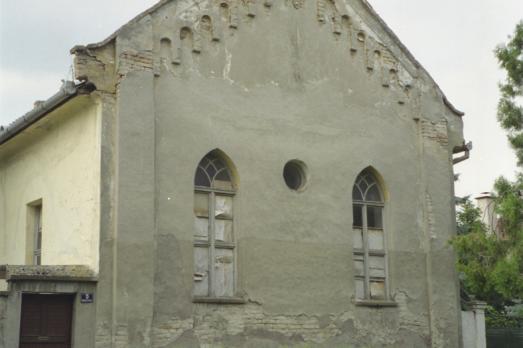
Synagogue in Apatin
Apatin, RS
The Apatin Synagogue is an Ashkenazi synagogue built in 1885, now abandoned. The synagogue, built in brick, has neo-gothic elements as well as Rundbogenstil elements.
Here you can search for a building to visit. You can use the map find destinations, or you can use the filters to search for a building based upon what different criteria.

Apatin, RS
The Apatin Synagogue is an Ashkenazi synagogue built in 1885, now abandoned. The synagogue, built in brick, has neo-gothic elements as well as Rundbogenstil elements.
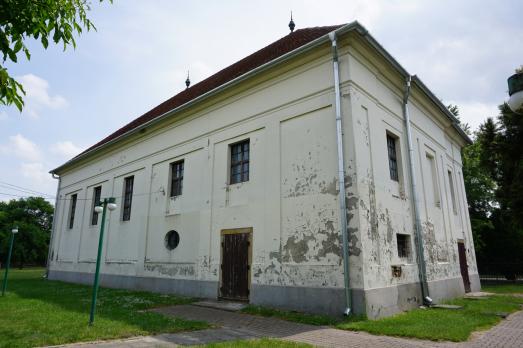
Apostag, HU
The Synagogue in Apostag is an Ashkenazi synagogue completed in 1822, rebuilt in 1987. This stone building in the Baroque style now serves as a cultural centre.
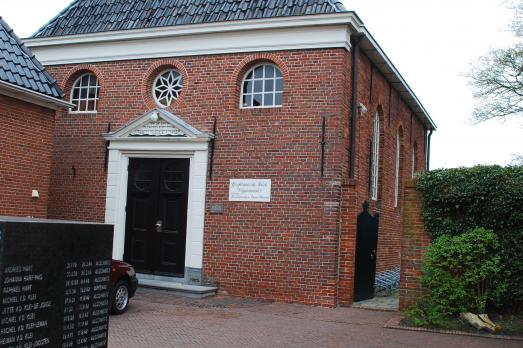
Appingedam, NL
This rectangular building with a hipped roof was constructed in 1801 as a replacement for an eighteenth-century house synagogue. The building has been renovated in 1874. The exterior contains rounded arch windows and a neoclassical entrance, including a cornice and a fronton with a Hebrew inscription (Ezekiel 43:1-2). The pedestals of the pillars contain the Hebrew date (5)561 which corresponds with 1801. Inside the synagogue, the wooden vault ceiling was painted blue and includes a rising sun on the eastside above the Torah Ark while the western end is adorned with a moon above the gallery. Both the Torah Ark and the railings of the former bimah are executed in the Louis XVI style. Then women's gallery is supported by small Ionic columns. The building was damaged during a bombardment in May 1945. After the Second World War, the building was sold. The last renovation of the building took palce in 1989 and has since been used as a church.
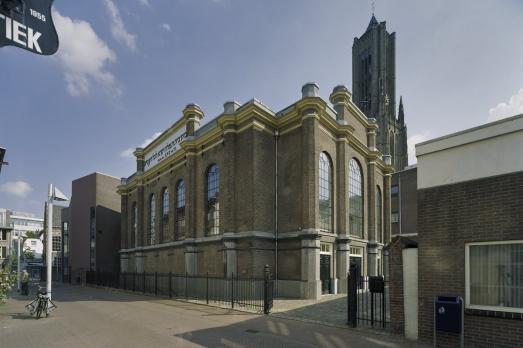
Arnhem, NL
The site of this synagogue was previously occupied by the private home of the Jewish lawyer Jonas Daniel Meijer (1780-1834). The eclectic style of the building includes neoclassical facades with ashlar plinths, wooden cornices, gothic-inspired pillars and rounded arch windows with iron panes. The entrance of the synagogue is located in the central ressault of the west façade. Upon entering the synagogue, the neoclassical Torah Ark topped by the Stone Tablets and designed by Moritz Meijer can be seen at the eastern end of the building. The galleries on both sides of the longitudinal axis of the building are supported by octagonal columns. During the Second World War, the building was used as a storage space. In 1949/50, the architect J. S. Baars added windows in the plinth of the north façade which visually corresponded with the existing rounded arch windows. These new windows were later removed during a renovation in 2001/03, after which the synagogue was rededicated on November 23, 2003. The adjacent building which contained the mikveh designed by H. J. Heuvelink, the architect which was responsible for the main synagogue, has been demolished.
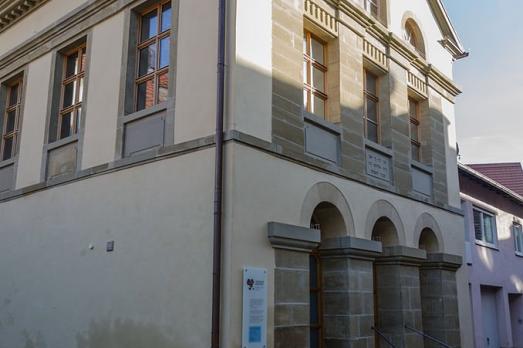
Arnstein, DE
The Synagogue in Arnstein is an Ashkenazi synagogue completed in 1819. The eastern wall of the prayer hall above the Torah ark was decorated with a depiction of the Jerusalem Temple. Only upper part of the mural is preserved, showing open curtains and hanging lamps. During the renovation of 1905, the vault of the prayer hall was decorated with Judenstil paintings, including a pair of griffins flanking the semi-circle window in the eastern wall. Each griffin holds a coat of arms. The synagogue was renovated in 2008-2012 and serves now as a cultural center. In use until 1938, this stone synagogue now serves as a cultural centre.
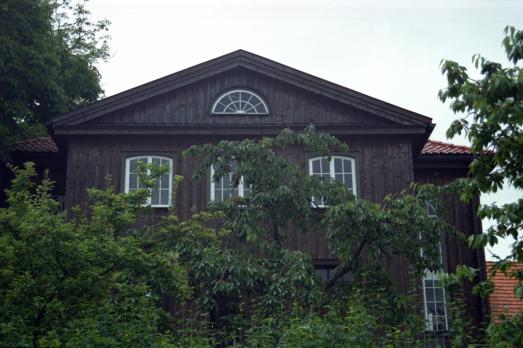
Aschenhausen, DE
The Synagogue in Aschenhausen is an Ashkenazi synagogue from 1843. This Neo-Classical wooden building is now a cultural centre.
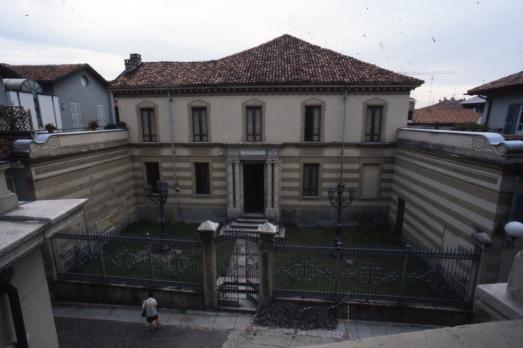
Asti, IT
The construction of the synagogue of Asti was carried out in two phases, the first in 1786 and the second in 1889. This brick building in baroque and neo-classical style is now used as a museum.
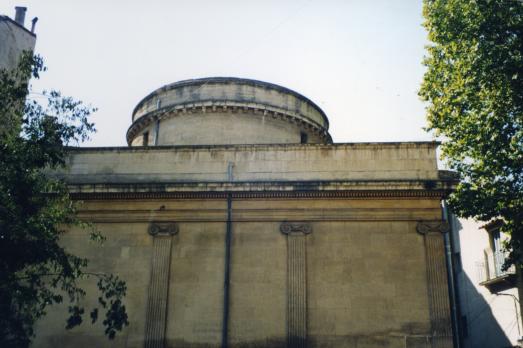
Avignon, FR
The Synagogue in Avignon is a Sephardi synagogue built in 1849 by architects Duchesne and Joseph-Auguste Joffroy. This Neo-Classical stone building still serves as a synagogue.
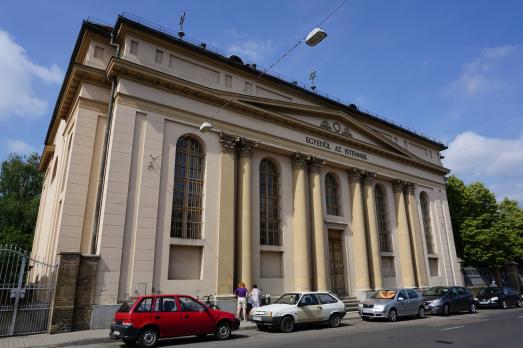
Baja, HU
The synagogue, designed by the Christian architect Lajos Frey, is a magnificent Neo-Classicist building erected in 1842-45. Its western (entrance) and northern (street) façades are decorated by Corinthian porticos. The interior is spanned with sail vaults and was richly painted, probably in the late nineteenth or early twentieth century. In 1980 the building was converted into a library, but its interior was almost completely preserved.
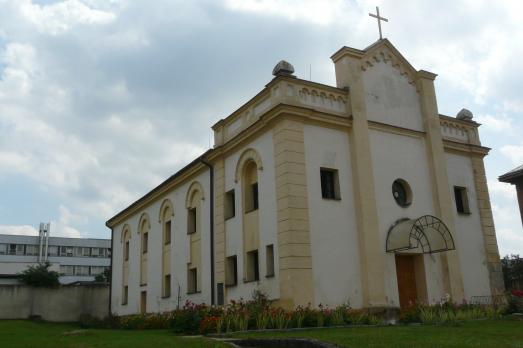
Bánovce nad Bebravou, SK
The Synagogue in Bánovce nad Bebravou is an Ashkenazi synagogue completed in 1862. The synagogue was rebuilt after WWII. In use until WWII, this brick synagogue in the Neo-Romanesque style now serves as a church.

new
Nestled amidst the serene landscapes of the Harz region, lies a hidden gem for nature enthusiasts and history buffs alike - the Harz Monastery Hiking Trail. Lace up your hiking boots and embark on this captivating adventure that will transport you back in time.

The Holy Mile (Miglio Sacro) of Naples is a one-mile-long itinerary, through sacred places linked to the city's patron saint, San Gennaro, in the Rione Sanità district. Discover the city from a new perspective with this unique walking tour.

As a university city, cultural offerings abound in Tartu and will reach their peak after being designated one of three European Capitals of Culture for 2024. In this list, we've compiled the most interesting sacred places to visit in and around the old town.